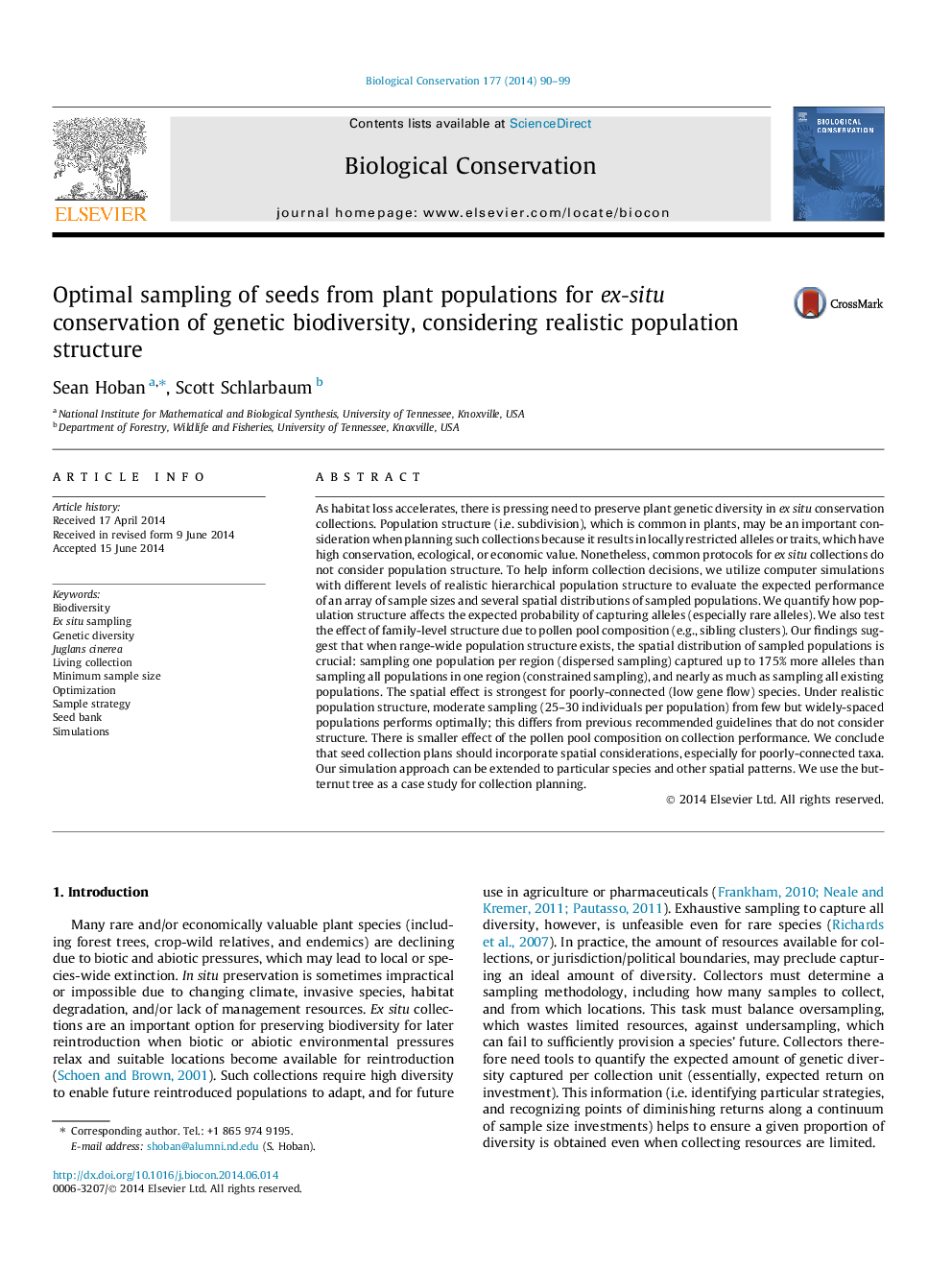| Article ID | Journal | Published Year | Pages | File Type |
|---|---|---|---|---|
| 6300203 | Biological Conservation | 2014 | 10 Pages |
Abstract
As habitat loss accelerates, there is pressing need to preserve plant genetic diversity in ex situ conservation collections. Population structure (i.e. subdivision), which is common in plants, may be an important consideration when planning such collections because it results in locally restricted alleles or traits, which have high conservation, ecological, or economic value. Nonetheless, common protocols for ex situ collections do not consider population structure. To help inform collection decisions, we utilize computer simulations with different levels of realistic hierarchical population structure to evaluate the expected performance of an array of sample sizes and several spatial distributions of sampled populations. We quantify how population structure affects the expected probability of capturing alleles (especially rare alleles). We also test the effect of family-level structure due to pollen pool composition (e.g., sibling clusters). Our findings suggest that when range-wide population structure exists, the spatial distribution of sampled populations is crucial: sampling one population per region (dispersed sampling) captured up to 175% more alleles than sampling all populations in one region (constrained sampling), and nearly as much as sampling all existing populations. The spatial effect is strongest for poorly-connected (low gene flow) species. Under realistic population structure, moderate sampling (25-30 individuals per population) from few but widely-spaced populations performs optimally; this differs from previous recommended guidelines that do not consider structure. There is smaller effect of the pollen pool composition on collection performance. We conclude that seed collection plans should incorporate spatial considerations, especially for poorly-connected taxa. Our simulation approach can be extended to particular species and other spatial patterns. We use the butternut tree as a case study for collection planning.
Related Topics
Life Sciences
Agricultural and Biological Sciences
Ecology, Evolution, Behavior and Systematics
Authors
Sean Hoban, Scott Schlarbaum,
